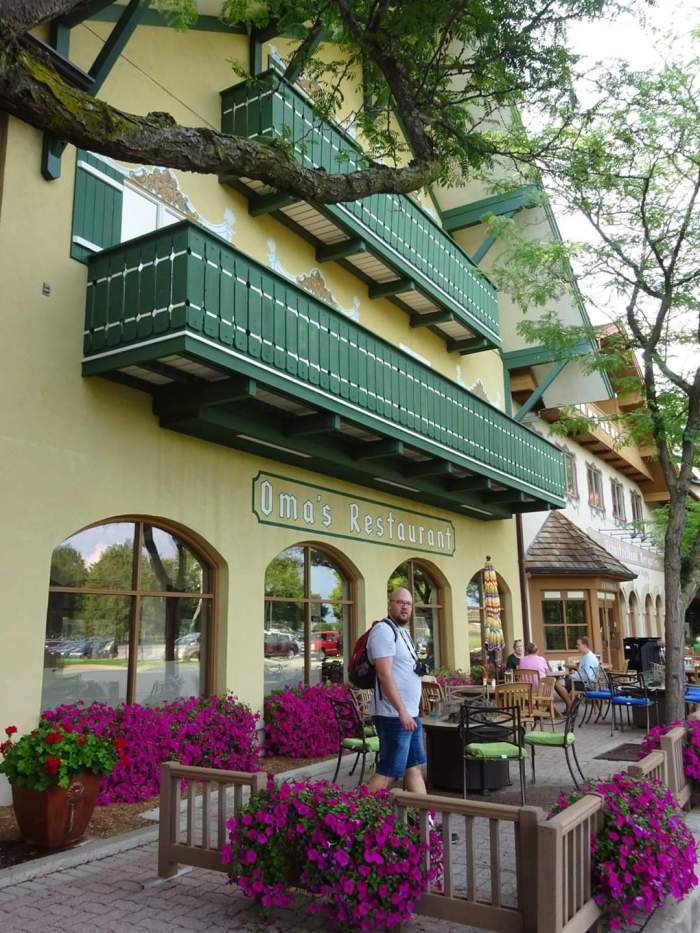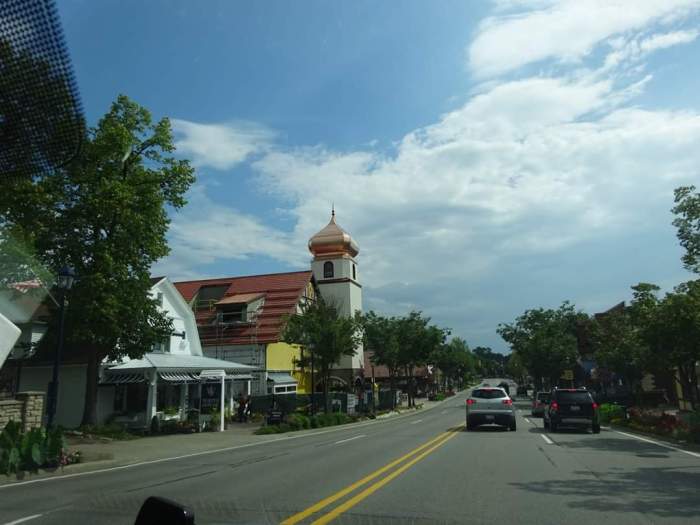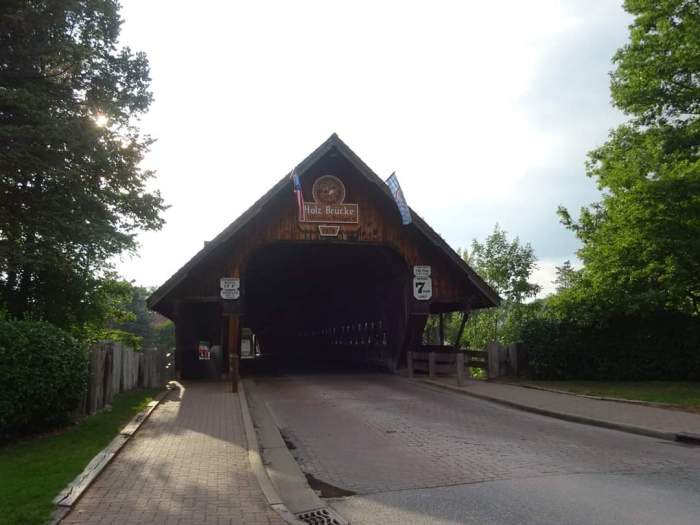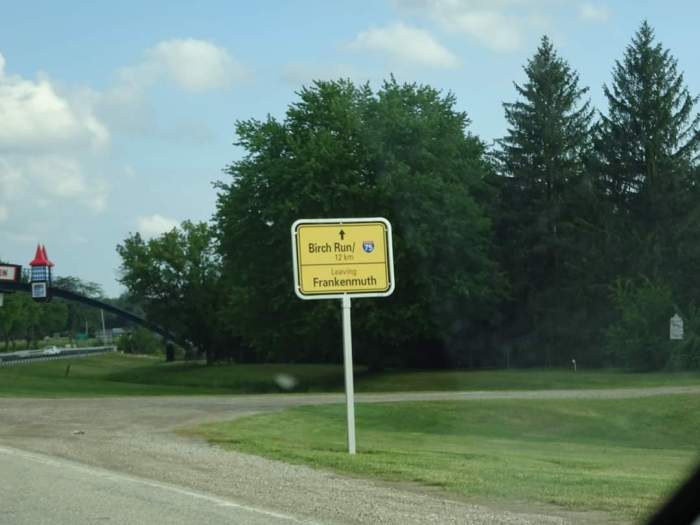
In connection with the article on the City of Frankenmuth (which you can click here to read), the city known as Little Bavaria is famous for its Christmas Market. Created in 2005, it is one of the youngest of the ten festivals and events taking place annually in Frankenmuth. And despite its small size, it is one of the most popular of markets in the city. Shortly after the visit in July, 2018, I had a chance to interview Dietrich Bronner, who is the grandson of the late Wally Bronner, who founded the world’s largest Christmas store, Bronner’s. He is the catalogue and product manager of the store who was also one of the driving forces behind creating the Christmas market in Frankenmuth.
The interview unfortunately happened right after the Christmas market ended in December. It only takes place on the first Advent Weekend, about the same time as Thanksgiving. This year, the interview is being posted in hopes that people wishing to see the market can do so, as it takes place November 29th- December 1st 2019. Details of the Christmas market can be found here.
Without further ado, here’s what you can find at the Christmas market and how you can contribute to its ongoing success:
- Why did the City of Frankenmuth introduced the Christmas market? Who was the driving force behind this? The Christkindlmarkt is hosted by the Frankenmuth Farmers Market. We started the Market in 2005 and that year we added the Christkindlmarkt as a winter-time extension of the market. This is the 14th year we are hosting it. Frankenmuth is very much a Bavarian-themed town that attracts up to 3 million visitors a year. The market is a nonprofit 501c3 organization. A board of directors were the volunteers that started it originally with a paid market master. Laurajeanne Kehn was the paid market master for 12 years and she is the one that had the driving force to start it.

- How is the market in Frankenmuth plotted out- is it along the streets of Downtown or is there a certain spot where the booths are put up and arranged like in a typical German Christmas market? Our Christkindlmarkt is in a large heated tent downtown. We put the tent up just for the Christkindlmarkt. Vendors have booths inside and outside of the tent. We would love to have various booths outside more like a traditional German market, but we don’t have the funding or ideal storage to have those booths. We may in the future. In 2015 we built and opened a $2.1 building with a vendor pavilion outside. Inside the building is a Gathering Barn for events, a Farm Store for year round sales of local products, an office, conference room, and a fully licensed commercial kitchen or incubator kitchen (Artisans Kitchen) which can be rented to make commercially sellable foods. I am the chef there and we cook many various dinners, meals, and experience meals there. The building is at the north end of town about 1 mile away from the downtown.

- What do you offer for Food, beverages and Gifts at the market? Are there some German products sold there- if so, which ones and in particular, which one is the most popular? We or the vendors have offered sausages, baked goods of all sorts, specialty Germany treats (lebkuchen, stollen, pfeffernusse, springerle), popcorn, kettle corn, pasties (a Dutch/Michigan item), sauces and condiments, teas, coffee, fudge, roasted/glazed nuts, local chestnuts, salsas, and much more. The German treats sell very well, especially the lebkuchen and springerle.

- Many German Christmas markets have their Season during Advent, yet yours runs from Thanksgiving to the first Advent. Why is that? Ours coincides when we have the most visitors in town, which is the day/weekend after Thanksgiving which is a huge shopping “holiday”—Black Friday. That weekend, on Friday night, we have a holiday lighting ceremony where the Chamber of Commerce hosts a program that thousands of people attend. This is like the start to Christmas. There is a singing program by the Gemuetlichkeit Club (I’m the president of that, too) and then local church choirs and the Christmas story is told and then the Christmas lights are turned on. This weekend and the next weekend, there are thousands of visitors, so we run the Christkindlmarkt these two weekends. It takes many volunteers to run it, so we only have it two weekends.
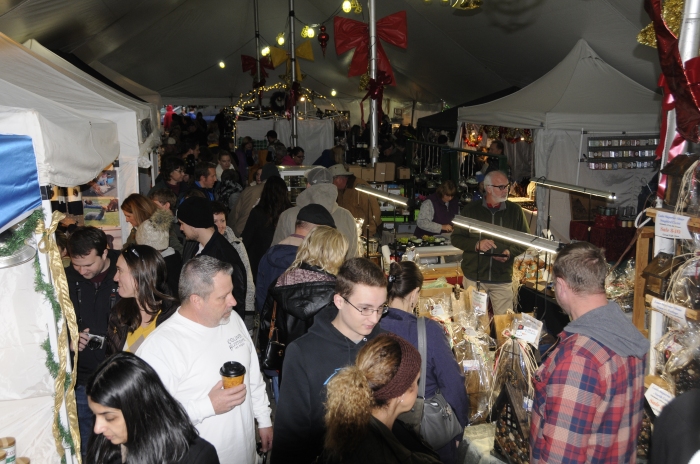
- What Special Events does the market offer? We have carolers, a Christmas angel made a proclamation last year, we have live musicians that play Christmas music, we have meet and greets with Santa, but the main attraction is shopping because we want to support our local vendors.

- How many People have visited the market each Christmas? We have about 20,000 visitors over the six days.

- If there were some improvements to be made for the Frankenmuth Christmas market, which ones would you point out and why? We would love for it to be larger and have more vendors and a wider variety of products. However, we are limited on space, the event requires much labor to manage it, and renting the tent is expensive. We carefully select and screen our vendors and we only allow local vendors to support the local economy.
Author’s Note: A special thanks to Dietrich Bronner for supplying the photos and for the interview. Hope your Christmas Market is a success this year and beyond. 🙂



